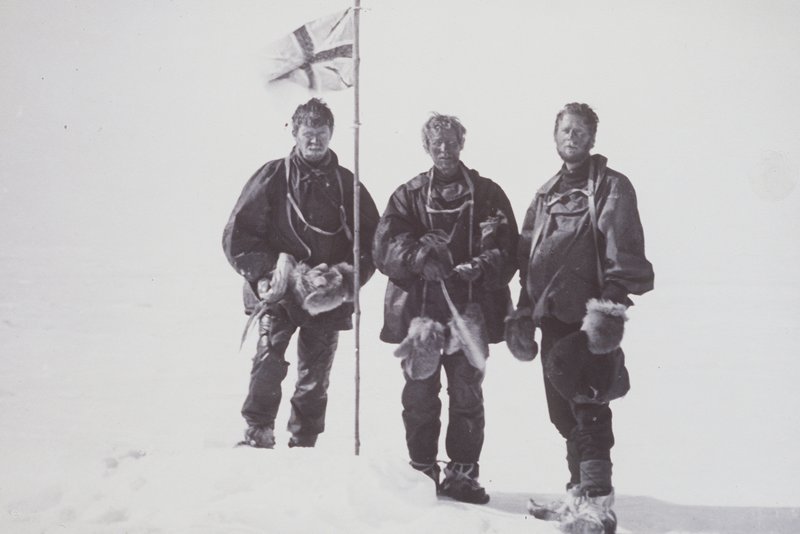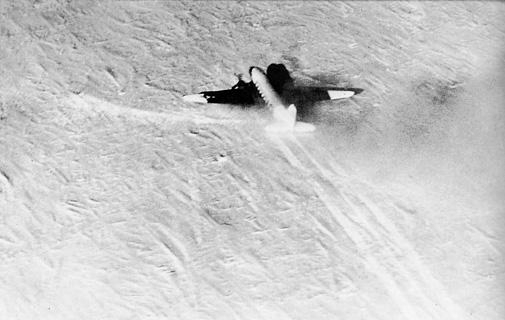|
Antarctic Specially Managed Areas
An Antarctic Specially Managed Area (ASMA) is a protected area on the continent of Antarctica, or on its adjacent islands. ASMAs are managed by the governments of Brazil, Poland, Ecuador, Peru, United States, New Zealand, Australia, Norway, Spain, United Kingdom, Chile, India, Russia, and Romania. The purpose of the ASMA sites are "to assist in the planning and coordination of activities within a specified area, avoid possible conflicts, improve cooperation between Antarctic Treaty Consultative Parties (ATCPs) and minimise environmental impacts. ASMAs may include areas where activities pose risks of mutual interference or cumulative environmental impacts, as well as sites or monuments of recognised historical value." Unlike the Antarctic Specially Protected Areas, ASMAs do not require a permit to enter. List of ASMAs See also *Antarctic Specially Protected Area An Antarctic Specially Protected Area (ASPA) is an area on the continent of Antarctica, or on nearby islands, w ... [...More Info...] [...Related Items...] OR: [Wikipedia] [Google] [Baidu] |
Antarctica
Antarctica () is Earth's southernmost and least-populated continent. Situated almost entirely south of the Antarctic Circle and surrounded by the Southern Ocean (also known as the Antarctic Ocean), it contains the geographic South Pole. Antarctica is the fifth-largest continent, being about 40% larger than Europe, and has an area of . Most of Antarctica is covered by the Antarctic ice sheet, with an average thickness of . Antarctica is, on average, the coldest, driest, and windiest of the continents, and it has the highest average elevation. It is mainly a polar desert, with annual Climate of Antarctica#Precipitation, precipitation of over along the coast and far less inland. About 70% of the world's freshwater reserves are frozen in Antarctica, which, if melted, would raise global sea levels by almost . Antarctica holds the record for the Lowest temperature recorded on Earth, lowest measured temperature on Earth, . The coastal regions can reach temperatures over in the ... [...More Info...] [...Related Items...] OR: [Wikipedia] [Google] [Baidu] |
Douglas Mawson
Sir Douglas Mawson (5 May 1882 – 14 October 1958) was a British-born Australian geologist, Antarctic explorer, and academic. Along with Roald Amundsen, Robert Falcon Scott, and Sir Ernest Shackleton, he was a key expedition leader during the Heroic Age of Antarctic Exploration. Mawson was born in England and was brought to Australia as an infant. He completed degrees in mining engineering and geology at the University of Sydney. In 1905 he was made a lecturer in petrology and mineralogy at the University of Adelaide. Mawson's first experience in the Antarctic came as a member of Shackleton's Nimrod Expedition, ''Nimrod'' Expedition (1907–1909), alongside his mentor Edgeworth David. They were part of the expedition's northern party, which became the first to attain the South magnetic pole and to climb Mount Erebus. After his participation in Shackleton's expedition, Mawson became the principal instigator of the Australasian Antarctic Expedition (1911–1914). The expedit ... [...More Info...] [...Related Items...] OR: [Wikipedia] [Google] [Baidu] |
Antarctic Specially Managed Areas
An Antarctic Specially Managed Area (ASMA) is a protected area on the continent of Antarctica, or on its adjacent islands. ASMAs are managed by the governments of Brazil, Poland, Ecuador, Peru, United States, New Zealand, Australia, Norway, Spain, United Kingdom, Chile, India, Russia, and Romania. The purpose of the ASMA sites are "to assist in the planning and coordination of activities within a specified area, avoid possible conflicts, improve cooperation between Antarctic Treaty Consultative Parties (ATCPs) and minimise environmental impacts. ASMAs may include areas where activities pose risks of mutual interference or cumulative environmental impacts, as well as sites or monuments of recognised historical value." Unlike the Antarctic Specially Protected Areas, ASMAs do not require a permit to enter. List of ASMAs See also *Antarctic Specially Protected Area An Antarctic Specially Protected Area (ASPA) is an area on the continent of Antarctica, or on nearby islands, w ... [...More Info...] [...Related Items...] OR: [Wikipedia] [Google] [Baidu] |
Antarctic Specially Protected Area
An Antarctic Specially Protected Area (ASPA) is an area on the continent of Antarctica, or on nearby islands, which is protected by scientists and several different international bodies. The protected areas were established in 1961 under the Antarctic Treaty System The Antarctic Treaty and related agreements, collectively known as the Antarctic Treaty System (ATS), regulate international relations with respect to Antarctica, Earth's only continent without a native human population. It was the first arms ..., which governs all the land and water south of 60 latitude and protects against human development. A permit is required for entry into any ASPA site. The ASPA sites are protected by the governments of Australia, New Zealand, United States, United Kingdom, Chile, France, Argentina, Poland, Russia, Norway, Japan, India, Italy, and Republic of Korea. There are currently 72 sites. List of ASPA sites See ... [...More Info...] [...Related Items...] OR: [Wikipedia] [Google] [Baidu] |
Southwest Anvers Island And Palmer Basin
Southwest Anvers Island and Palmer Basin is a 3275 km2 Antarctic Specially Managed Area (ASMA 7). It lies towards the northern end of the Antarctic Peninsula, encompassing the south-western coastline of Anvers Island, in the Palmer Archipelago, with the adjacent deep marine waters of the Palmer Basin, the shallower Bismarck Strait, and fringing island groups. Description Features of the south-west coastline of Anvers Island include the United States’ Palmer Station on Arthur Harbour - an Long Term Ecological Research Network, LTER site and the principal logistical centre for research within AMSA 7, as well as the ice cliffs of the Marr Ice Piedmont, the ice-free Cape Monaco, Capes Monaco and Cape Lancaster, Lancaster, and Biscoe Point. The waters of the Palmer Basin extend to a maximum depth of over 1400 m and are surrounded by shallower waters mostly no more than 600 m deep. The island groups include the Rosenthal Islands, Rosenthal and Joubin Islands to the n ... [...More Info...] [...Related Items...] OR: [Wikipedia] [Google] [Baidu] |
Larsemann Hills
The Larsemann Hills are a series of low rounded coastal hills along the southeastern shore of Prydz Bay, Antarctica extending for from Dålk Glacier. They were discovered in February 1935 by Captain Klarius Mikkelsen from the whaling ship ''Thorshavn'', sent out by Norwegian whaling magnate Lars Christensen, and given this name. The bedrock of the Larsemann Hills contains an unusually high abundance of boron and phosphate minerals and is the location of discovery of four new species of mineral. In 2014, the Stornes Peninsula within the Larsemann Hills was declared an Antarctic Specially Protected Area due to its mineral diversity. Research stations As an Antarctic oasis the hills are the home of several Antarctic research stations. * The abandoned original Russian Progress Station. * The relocated new Russian Progress II Station. * The Chinese Zhongshan station * The Australian-donated Romanian Law-Racoviță-Negoiță Station * The India India, officially the ... [...More Info...] [...Related Items...] OR: [Wikipedia] [Google] [Baidu] |
Amundsen–Scott South Pole Station
The Amundsen–Scott South Pole Station is a science and technology in the United States, United States scientific research station at the South Pole of the Earth. It is the List of extreme points of the United States, southernmost point under the jurisdiction (not sovereignty) of the United States. The station is located on the high Antarctic Plateau, plateau of Antarctica at above sea level. It is administered by the Office of Polar Programs of the National Science Foundation, specifically the United States Antarctic Program (USAP). It is named in honor of Norwegian Roald Amundsen and Briton Robert Falcon Scott, Robert F. Scott, leaders of the competing first and second expeditions to reach the pole, in the summer of 1911–1912. The original Amundsen–Scott Station was built by Seabee, Navy Seabees for the federal government of the United States during November 1956, as part of its commitment to the Science, scientific goals of the International Geophysical Year, an ef ... [...More Info...] [...Related Items...] OR: [Wikipedia] [Google] [Baidu] |
Deception Island
Deception Island is in the South Shetland Islands close to the Antarctic Peninsula with a large and usually "safe" natural harbour, which is occasionally affected by the underlying active volcano. This island is the caldera of an active volcano, which seriously damaged local scientific stations in 1967 and 1969. The island previously held a whaling station. It is now a tourist destination with over 15,000 visitors per year. Two research stations are operated by Argentina and Spain during the summer season. While various countries have asserted sovereignty, it is still administered under the Antarctic Treaty System, meaning it is under no control. Geography Located within the Bransfield Strait, the island is roughly circular and horseshoe-shaped, with a maximum diameter around . The highest peak, Mount Pond on the east side of the island, has an elevation of , while Mount Kirkwood on the west has an elevation of . Over half (57%) of the island is covered by glaciers up to ... [...More Info...] [...Related Items...] OR: [Wikipedia] [Google] [Baidu] |
East Antarctica
East Antarctica, also called Greater Antarctica, constitutes the majority (two-thirds) of the Antarctic continent, lying primarily in the Eastern Hemisphere south of the Indian Ocean, and separated from West Antarctica by the Transantarctic Mountains. It is generally greater in elevation than West Antarctica, and includes the Gamburtsev Mountain Range in the center. The geographic South Pole is located within East Antarctica. Apart from small areas of the coast, East Antarctica is permanently covered by ice and it has relatively low biodiversity, with only a small number of species of terrestrial plants, animals, algae, and lichens. The coasts are the breeding ground for various seabirds and penguins, and the leopard seal, Weddell seal, elephant seal, crabeater seal and Ross seal breed on the surrounding pack ice in summer. Location and description Almost completely covered in thick, permanent ice, East Antarctica comprises Coats Land, Queen Maud Land, Enderby Land, ... [...More Info...] [...Related Items...] OR: [Wikipedia] [Google] [Baidu] |
Antarctic Specially Protected Areas
An Antarctic Specially Protected Area (ASPA) is an area on the continent of Antarctica, or on nearby islands, which is protected by scientists and several different international bodies. The protected areas were established in 1961 under the Antarctic Treaty System, which governs all the land and water south of 60 latitude and protects against human development. A permit is required for entry into any ASPA site. The ASPA sites are protected by the governments of Australia, New Zealand, United States, United Kingdom, Chile, France, Argentina, Poland, Russia, Norway, Japan, India, Italy, and Republic of Korea. There are currently 72 sites. List of ASPA sites See also *Antarctic Specially Managed Area References External linksOfficial List of ASPA sites [...More Info...] [...Related Items...] OR: [Wikipedia] [Google] [Baidu] |
George V Land
George V Land is a segment of Antarctica part of the land claimed as part of the Australian Antarctic Territory, inland from the George V Coast. As with other segments of Antarctica, it is defined by two lines of longitude, 142°02' E and 153°45' E, and by the 60°S parallel. This region was first explored by members of the Main Base party of the Australasian Antarctic Expedition (1911–14) under Douglas Mawson, who named this feature for King George V of Australia. References External links * George V Land on USGS website George V Landon SCAR A scar (or scar tissue) is an area of fibrosis, fibrous tissue that replaces normal skin after an injury. Scars result from the biological process of wound repair in the skin, as well as in other Organ (anatomy), organs, and biological tissue, t ... website Australian Antarctic Territory Lands of Antarctica {{GeorgeVLand-geo-stub ... [...More Info...] [...Related Items...] OR: [Wikipedia] [Google] [Baidu] |



